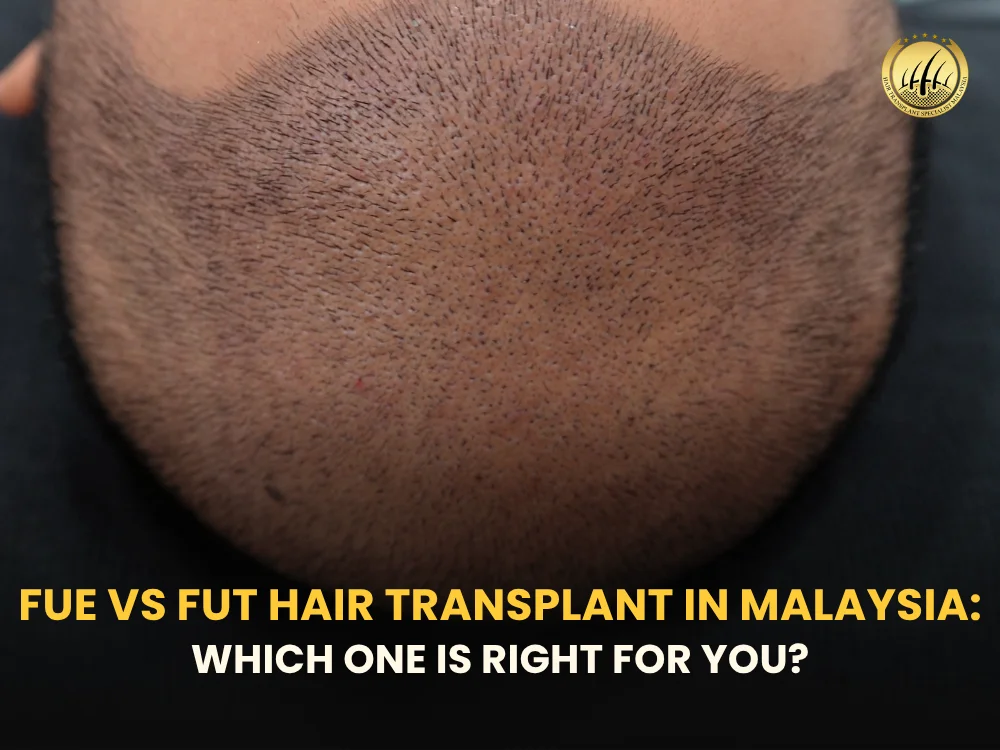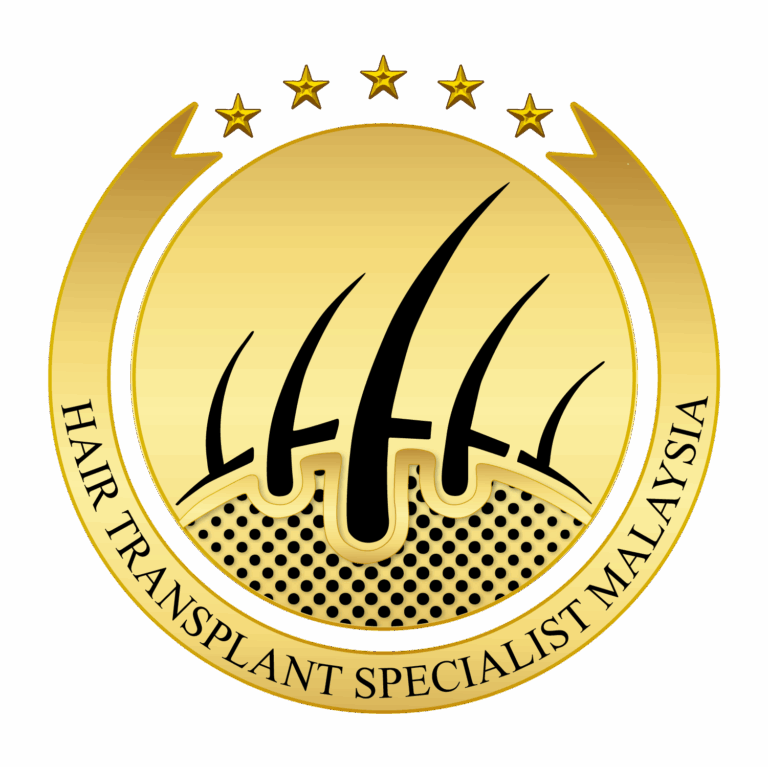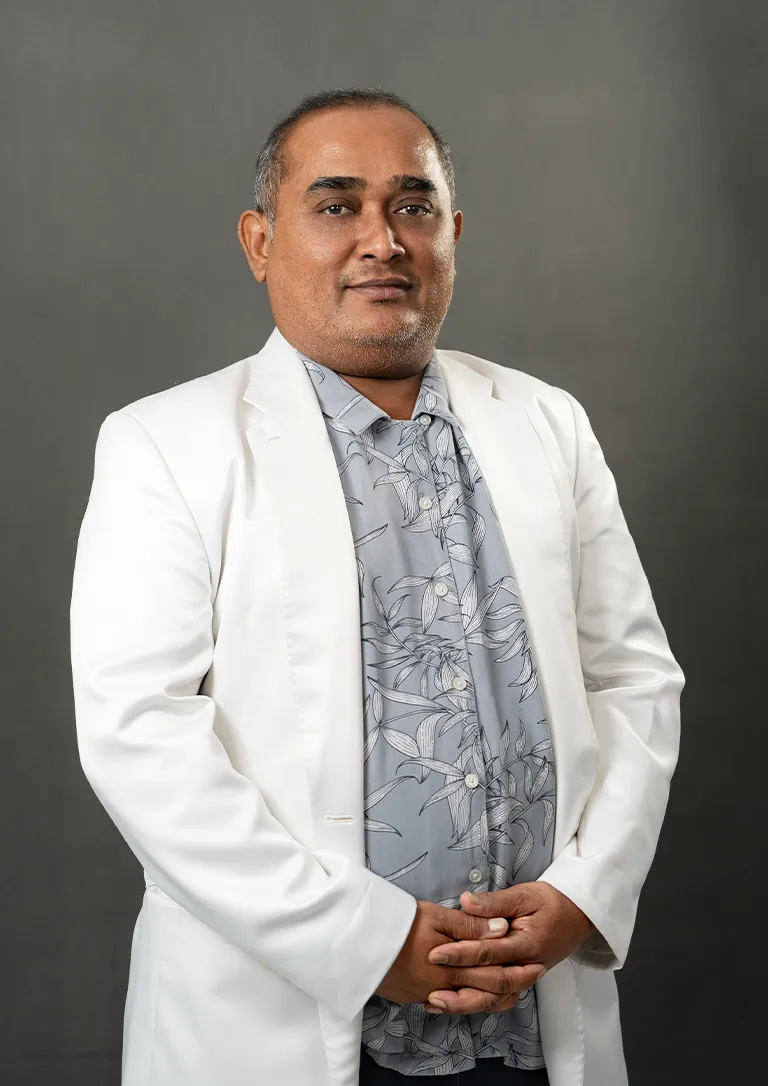When you’re investigating FUE vs FUT hair transplant in Malaysia, you’re essentially comparing two established surgical methods for restoring hair—each with its own strengths, limitations and suitability depending on your hair loss pattern, donor supply, lifestyle and goals. This article will guide you through the differences, what to look for in a clinic, and help you decide which method might be right for you at a certified Hair Transplant Malaysia Clinic with 25 + years’ expertise, ABHRS & ISHRS certified surgeons.
Understanding FUE and FUT: What are they?
- Follicular Unit Transplantation (FUT) involves removing a strip of scalp from the donor area (commonly the back of the head), dissecting it into individual grafts and transplanting them into the recipient site.
- Follicular Unit Extraction (FUE) involves extracting individual follicular units directly from the donor region using a small punch or tool, then transplanting them. There’s no large strip removed.
Why the comparison matters
Choosing between FUE vs FUT isn’t just about which “sounds better”. It’s about matching the method to your situation: how many grafts you’ll need, how prominent your donor area is, how quick you want recovery, what scar tolerance you have, and your long-term hair loss risk.
In Malaysia’s context (with Asian hair types, donor characteristics, climate), selection with a skilled clinic makes a big difference.
Key differences: FUE vs FUT
Here’s a breakdown of the major differences when comparing FUE vs FUT hair transplant:
Feature | FUE | FUT |
Donor harvesting | Individual follicles harvested. | Strip of scalp removed then dissected. |
Scarring | Tiny dot-scars, nearly invisible especially with short hair. | Linear scar across donor area; more visible with short hair. |
Recovery time | Shorter, less discomfort. | Longer recovery, more donor area tension. |
Graft yield (single session) | Usually lower maximum than FUT in one go. | Higher yield possible in one session—good for large bald-areas. |
Cost | Generally more expensive per graft due to time. | Often more cost-effective for large graft numbers. |
Best suited for | Short hairstyles, minimal visible scar, moderate graft need | Extensive baldness, high graft requirement, donor area supply good |
Suitability in Malaysian context
When considering FUE vs FUT in Malaysia, there are some local-specific factors:
- Asian hair tends to have thicker shafts, and darker contrast, which can help visual density even with fewer grafts. A good clinic will factor this in.
- Donor area characteristics – in some Malaysian patients donor scalp laxity or density may affect strip extraction (FUT) feasibility.
- Lifestyle and hairstyle preference – if you prefer short haircuts, FUE’s minimal scarring may be more appealing.
- Budget and long-term plan – if you anticipate needing a large number of grafts now or maybe later, FUT may offer better value in some cases.

Advantages & disadvantages of each (FUE vs FUT)
Advantages of FUE
Minimal visible scarring:
FUE involves extracting individual follicular units using micro punches, leaving only tiny dot-like scars that are virtually invisible, even with short hairstyles.Faster recovery and minimal downtime:
Because there are no stitches, patients can usually return to work or light activities within a few days.Ideal for moderate hair loss and smaller areas:
FUE is well-suited for patients who have a good donor area and do not require extremely high graft counts to achieve their desired density.Flexible donor harvesting:
Hair follicles can be taken from various parts of the scalp—or even beard or body hair—if needed.
Disadvantages of FUE
- Cost per graft can be higher.
- In cases needing very high graft numbers, may require multiple sessions.
Advantages of FUT
High graft yield in one session:
FUT allows a large number of grafts to be harvested in a single procedure, making it efficient for patients with advanced hair loss.Better cost efficiency for large cases:
The cost per graft is typically lower, making FUT more economical when a high volume of grafts is required.Preserves donor area for future sessions:
Because only a narrow strip of scalp is removed, the surrounding donor area remains largely intact for potential future transplants.
Disadvantages of FUT
- Linear scar which may limit short haircut options.
- Longer initial recovery time and more donor area discomfort.
How to decide which method (FUE vs FUT) is right for you
Here’s a checklist to help you weigh FUE vs FUT:
- How extensive is your hair loss (Norwood scale or equivalent)? If very large area, FUT may be favorable.
- How much donor hair do you have and how good is donor density?
- What hairstyle do you prefer (short vs longer hair)? A short hairstyle leans toward FUE.
- What’s your budget and willingness for downtime?
- Are you okay with a visible scar if haircut is very short?
- Do you anticipate needing multiple sessions over time?
- What’s the experience and credential of your surgeon (certified ABHRS, member of ISHRS) and their results in FUE vs FUT?
- What after-care and follow-up services does the clinic offer for your context in Malaysia?
What to expect during the process in Malaysia
When you choose a clinic in Malaysia (with over 25 years experience and ABHRS/ISHRS certified team), here’s what you should expect for both FUE and FUT:
- Thorough consultation: hair loss assessment, donor evaluation, scalp exam and discussion of FUE vs FUT suitability.
- Pre-op instructions: stopping certain medications, lifestyle prep, understanding recovery timeframe.
- On the day: Local anesthesia, technician/doctor team working on donor harvest and graft implantation.
- Post-op care: Specific instructions for donor and recipient scalp care, avoiding sun, sweat, swimming, etc.
- Follow-up visits: Monitoring growth, managing shedding phase, assessing graft take, and advising on maintenance (medications, topical treatments).
- Long-term results: Realistic timeline – you’ll often see early growth by months 4-6, with fuller maturation by months 9-12 or more.
Risks and realistic expectations
No method (FUE vs FUT) is entirely risk-free or magical. Some things to keep in mind:
- Both methods require good surgeon technique to ensure high graft survival. For instance, FUE has risk of transecting follicles.
- Scarring differs but still present; donor healing matters.
- Hair loss may continue in non-transplanted areas—maintenance may be needed.
- In Malaysia’s tropical climate, after-care (sun exposure, hydration, scalp hygiene) matters.
- Realistic expectation: Transplanted hair takes time to grow; initial shedding and slow growth are normal.
Cost and value considerations in Malaysia
While specific numbers vary by clinic and case, in Malaysia you’ll see:
- FUE tends to cost more due to time and precision.
- FUT can give more grafts for less cost per graft—better for large area coverage.
- Value is not just price: quality of surgeon, credentials (ABHRS, ISHRS), clinic experience (25+ years), after-care, patient reviews are all vital.
- Don’t choose solely based on “cheap FUE vs FUT” but on overall value and long-term result.
10 Frequently Asked Questions (FAQs)
- Is FUE always better than FUT?
Not necessarily. FUE has advantages (less scarring, quicker recovery) but FUT may be better for large area coverage and cost-effectiveness. The right method depends on your case. - Will there be a visible scar with FUE vs FUT?
Yes: FUE leaves many tiny dot scars, usually hard to see. FUT leaves a linear scar across donor area, which may be visible if you wear very short hair. - How early can I return to work after FUE vs FUT?
With FUE, many patients return within a few days (5-7), while FUT may require longer downtime (10-14 days) for donor healing. - Are the results of FUE and FUT equally good?
When done by a skilled surgeon, both can yield excellent results. The difference lies in technique suitability, surgeon skill, and patient factors. - Which method costs more in Malaysia, FUE or FUT?
Generally FUE costs more per graft. FUT may offer lower cost per graft for high numbers, but each clinic’s pricing varies. - Can someone with advanced baldness still use FUE?
Yes, but for very large coverage sometimes FUT may allow more grafts in one session. A proper assessment is required. - Will I need another transplant later if I choose FUE or FUT now?
Possibly. Hair loss may progress. A clinic should discuss long-term strategy regardless of method. - If I plan to keep my hair very short, which method is better?
FUE tends to be better if you want very short haircuts, because linear scars from FUT may become visible. - How does donor hair quality affect method choice?
Donor hair density, scalp laxity and hair characteristic matter. FUT may require enough donor strip; if donor area is sparse, FUE may be preferable. - What questions should I ask the surgeon regarding FUE vs FUT?
Ask: What is your experience with both methods? What result can I expect given my hair loss level? What scar can I expect? How many grafts? What is the cost difference? What is your after-care plan?
Conclusion
Deciding between FUE vs FUT hair transplant in Malaysia is not about one method being universally “better.” It’s about which method fits you — your hair loss pattern, donor supply, lifestyle, budget and long-term goals. With the right assessment and a clinic that has long-standing expertise (25+ years), international credentials (ABHRS, ISHRS membership), transparent results and personalised after-care, you’ll get best-in-class outcome.
Reach out to a trusted Hair Transplant Malaysia Clinic today, consult with their certified surgeon, review your FUE vs FUT options, see real patient portfolios, and decide with confidence.

